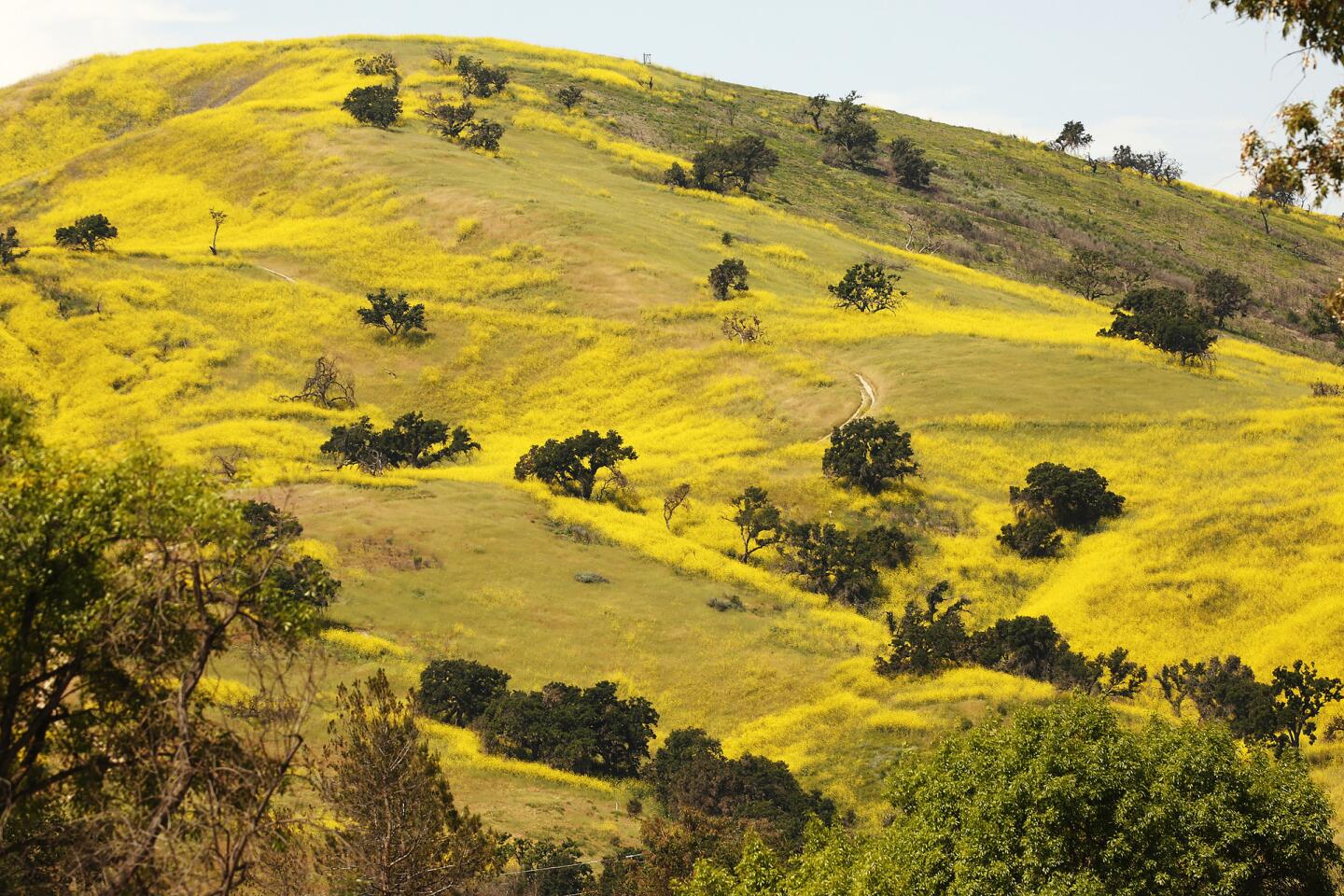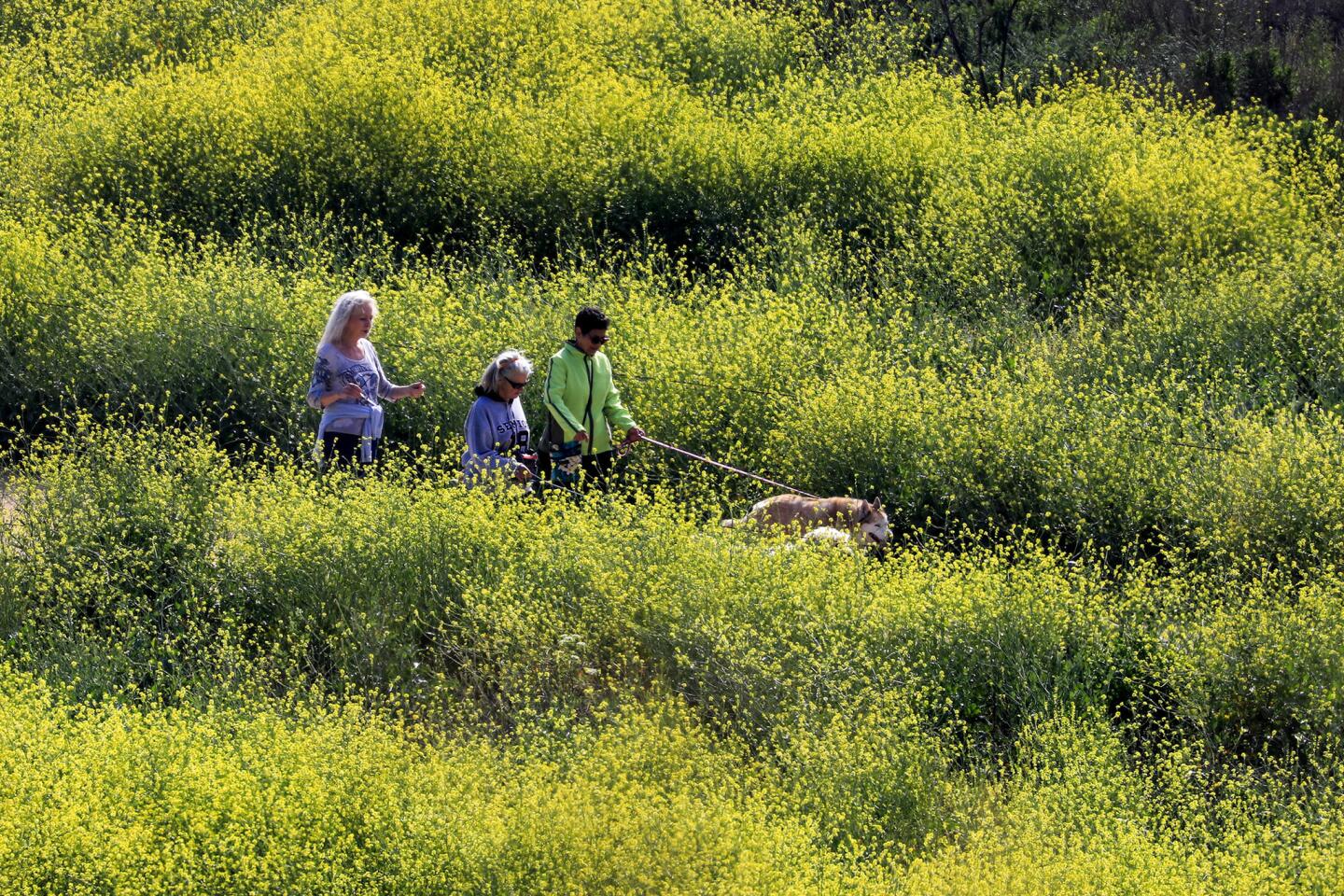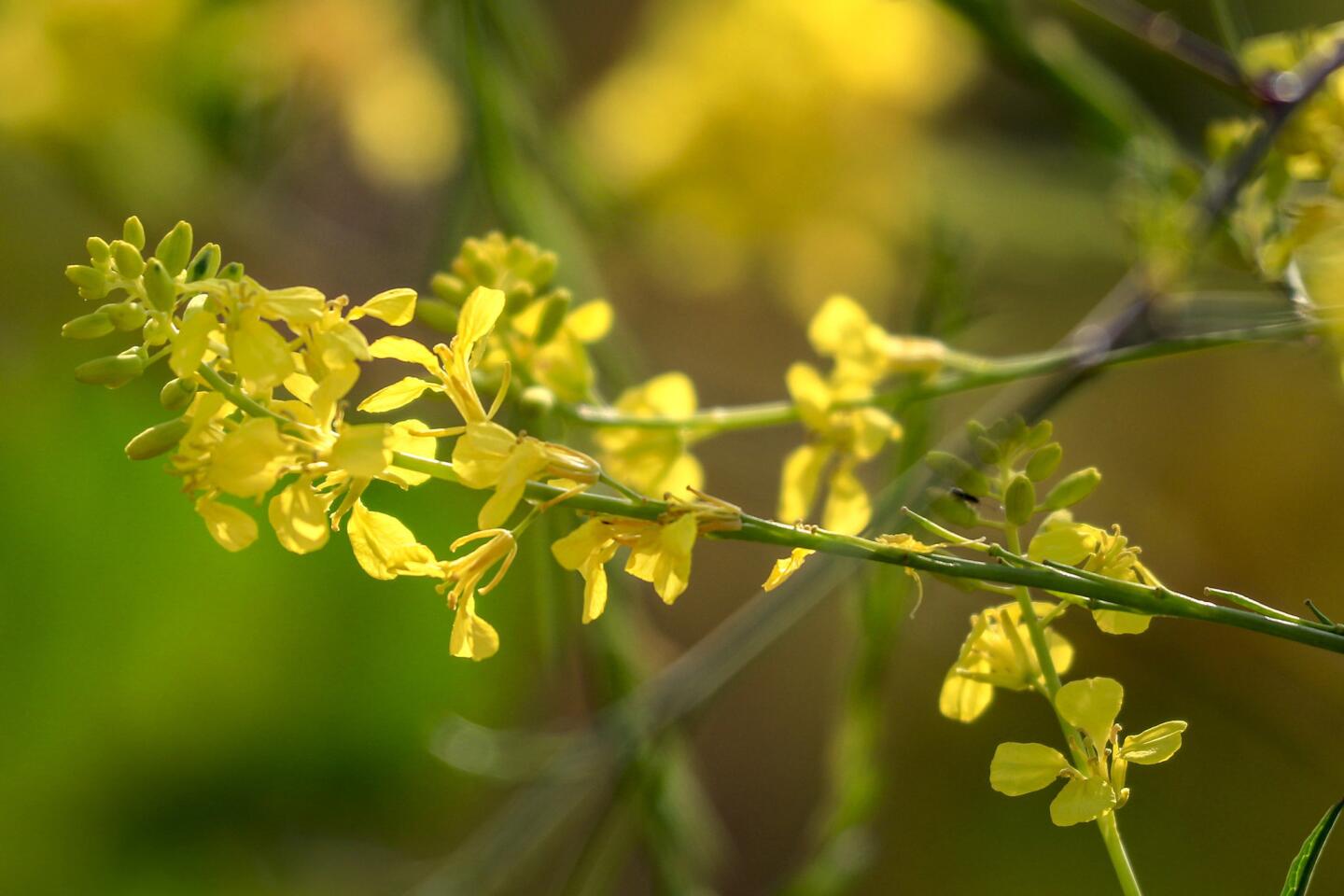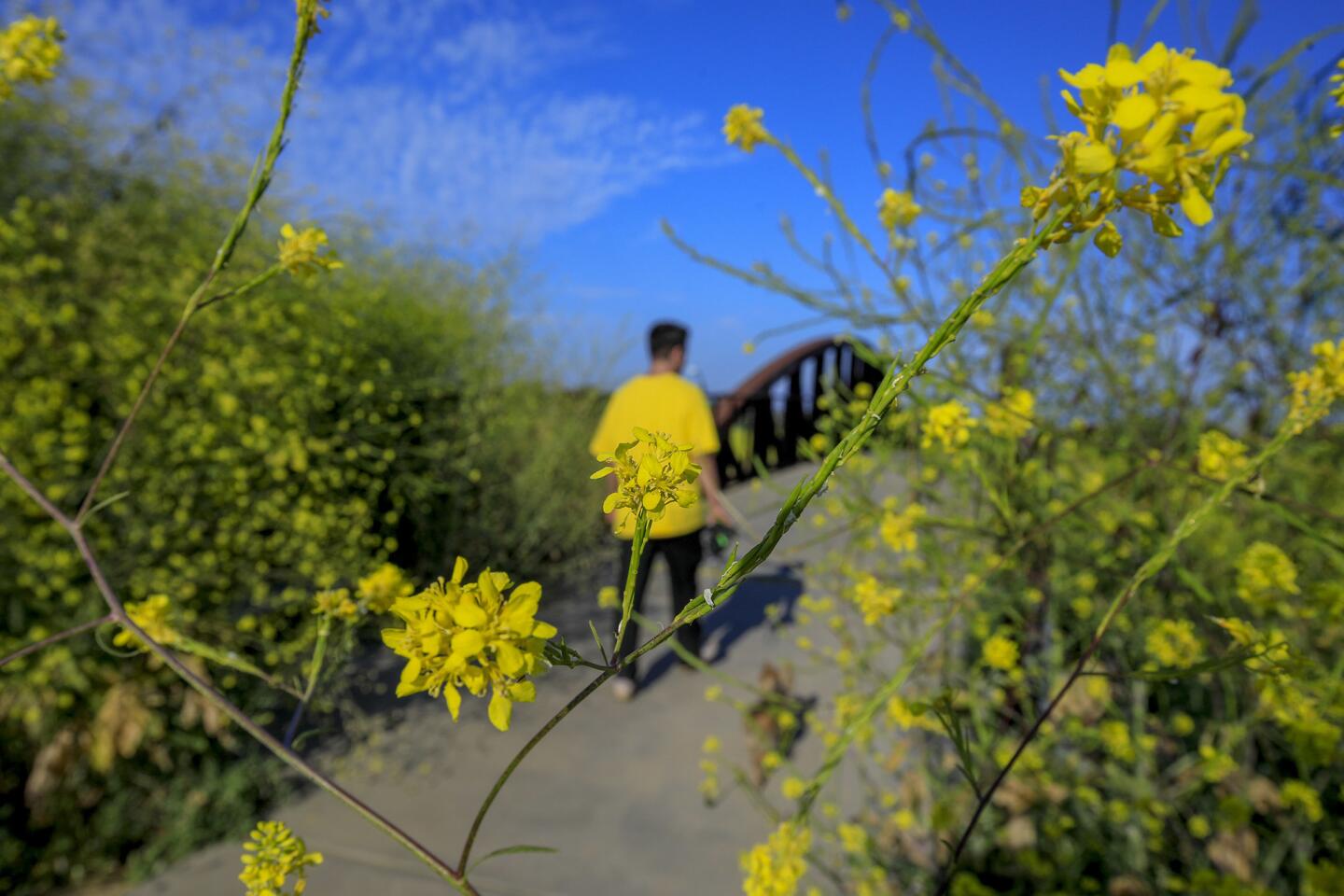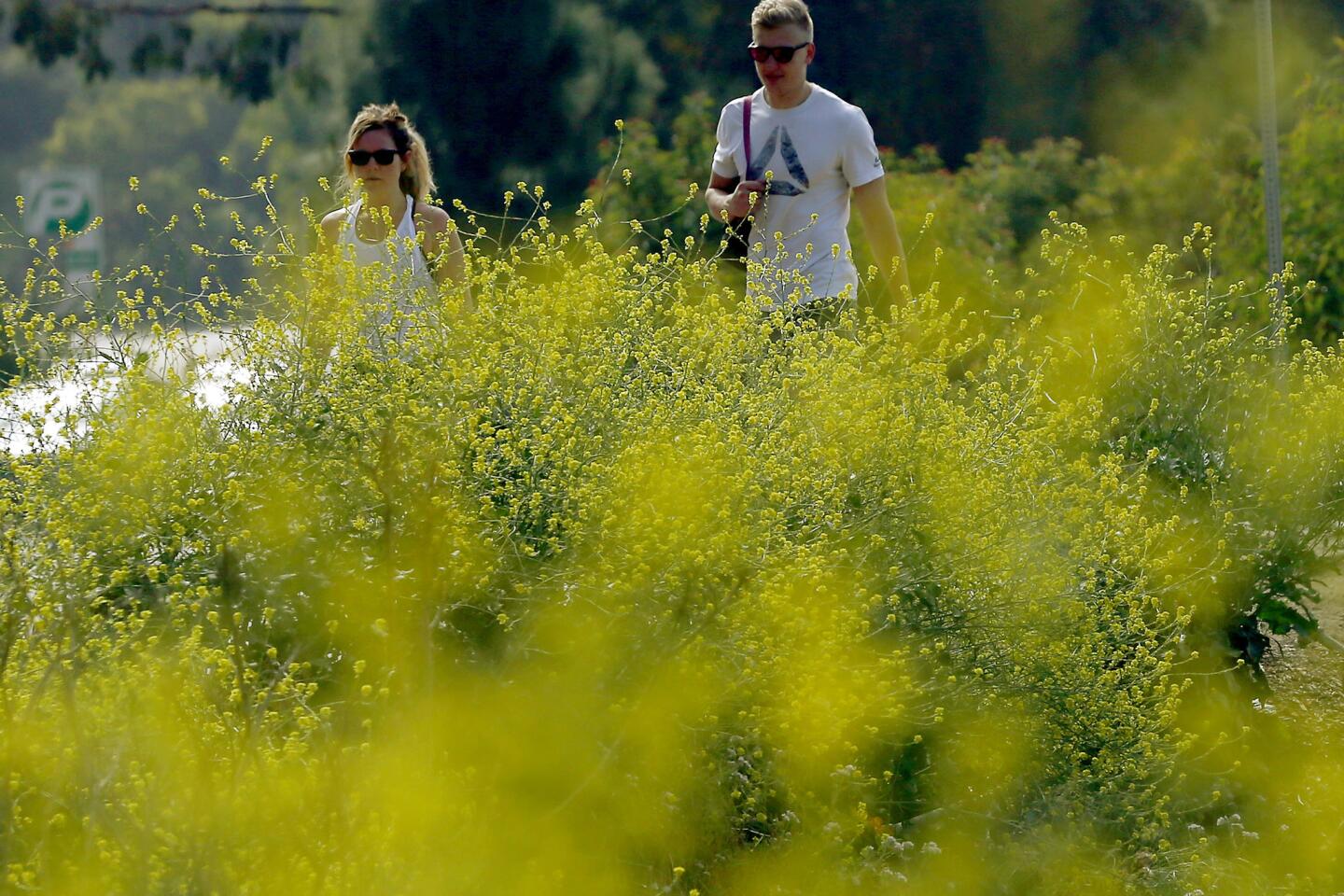This super bloom is pretty dangerous: Invasive mustard is fuel for the next fire
- Share via
Thanks to Southern California’s wet winter, the Santa Monica Mountains are alive with luminous purple phacelia and bright blue lupine flowers.
But amid the joyful eruption of native wildflowers, an aggressive interloper has also returned.
The yellow bloom of the invasive plant Brassica nigra, better known as black mustard, has covered the hillsides throughout the Santa Monica Mountains and much of the West.
“It is something people tend to misunderstand,” said Jutta Burger, the science program director for the California Invasive Plant Council. “They see a nice yellow field in the distance, [but] on closer inspection, it is a mustard field.”
The tough plant germinates early in winter before native plants have taken hold, shoots up more than 6 feet tall, hogs the sunlight with its thick stalks and lays down a deep system of roots that beats out native plants for water.
The weeds tend to dry up by July or August, and along with invasive European grasses they serve as kindling during Southern California’s long wildfire season, according to experts. Mustard plants lay down thousands of seeds and are one of the first plants to spring up after a fire.
“It is a vicious cycle,” Burger said.
The mustard and other invasive species are on the minds of botanists and ecologists working in the Santa Monica Mountains. The Woolsey fire last year scorched 96,949 acres, including more than 88% of the federal land in the Santa Monica Mountains National Recreation Area.
Scientists are closely monitoring over 400 areas with sensitive habitats to make sure invasive species aren’t spreading, said Joseph Algiers, a restoration ecologist for the recreation area.
They also are restoring burned areas with native plants, including coastal sagebrush species and giant wild rye.
But there are over 300 nonnative plants in the Santa Monicas — too many for park officials to control. Instead, they are focused on combating the spread of a select group dubbed “the evil 25,” including fountain grass, tree of heaven and Spanish broom. Some get planted for ornamental reasons or to stabilize hillsides and prevent erosion.
Park officials want to prevent other invasive species from taking over the way mustard has come to dominate the landscape.
“It is a terrible invasive species,” Algiers said. “It is so widespread. It doesn’t meet the criteria of being something we can actually manage on a large scale.”
The invasive plant was brought from Eurasia to the Pacific Coast by Spanish colonizers. It was intended to be a spice crop but quickly spread. Experts say it can be combated locally but will probably never be eradicated.
The plant takes advantage of natural habitats that are constantly disturbed — either by fire or by the creation and maintenance of roads, one reason mustard is so visible near highways.
In areas hit repeatedly by fires, the mustard can grow faster than native species. The plant often can be found growing near highly flammable European grasses like brome, said Scott Steinmaus, the head of Cal Poly San Luis Obispo’s horticulture and crop science department.
Mustard can make matters worse during a fire because the stalks are taller than the grass and can act as a “fire ladder,” carrying flames to taller trees, he said.
It is those invasive grasses that carry the most risk for firefighters, said Ventura County Fire Capt. Kenneth VanWig. Once they are dry, invasive grasses can ignite easily and carry fire quickly.
“The grasses are curing now. They turn brown pretty quick,” VanWig said. “And the grass is pretty tall this year.”
Mustard plants themselves don’t carry fire particularly well, he said, but in a wind-driven fire, they will burn.
Weed experts say the mustard plant’s omnipresence serves as an example of what can happen if an invasive species goes untreated.
“No way we are going to get rid of black mustard,” Steinmaus said. “We have so much of it. We can try to protect areas that don’t have a lot of it yet, but we will never eradicate black mustard.”
The National Park Service asks residents in the Santa Monica Mountains to choose native plants for their yards and avoid invasive ones that can still be found at nurseries. Algiers, the restoration ecologist, also asks volunteers interested in pulling invasive weeds and planting native species to email him at [email protected].
More to Read
Sign up for Essential California
The most important California stories and recommendations in your inbox every morning.
You may occasionally receive promotional content from the Los Angeles Times.


